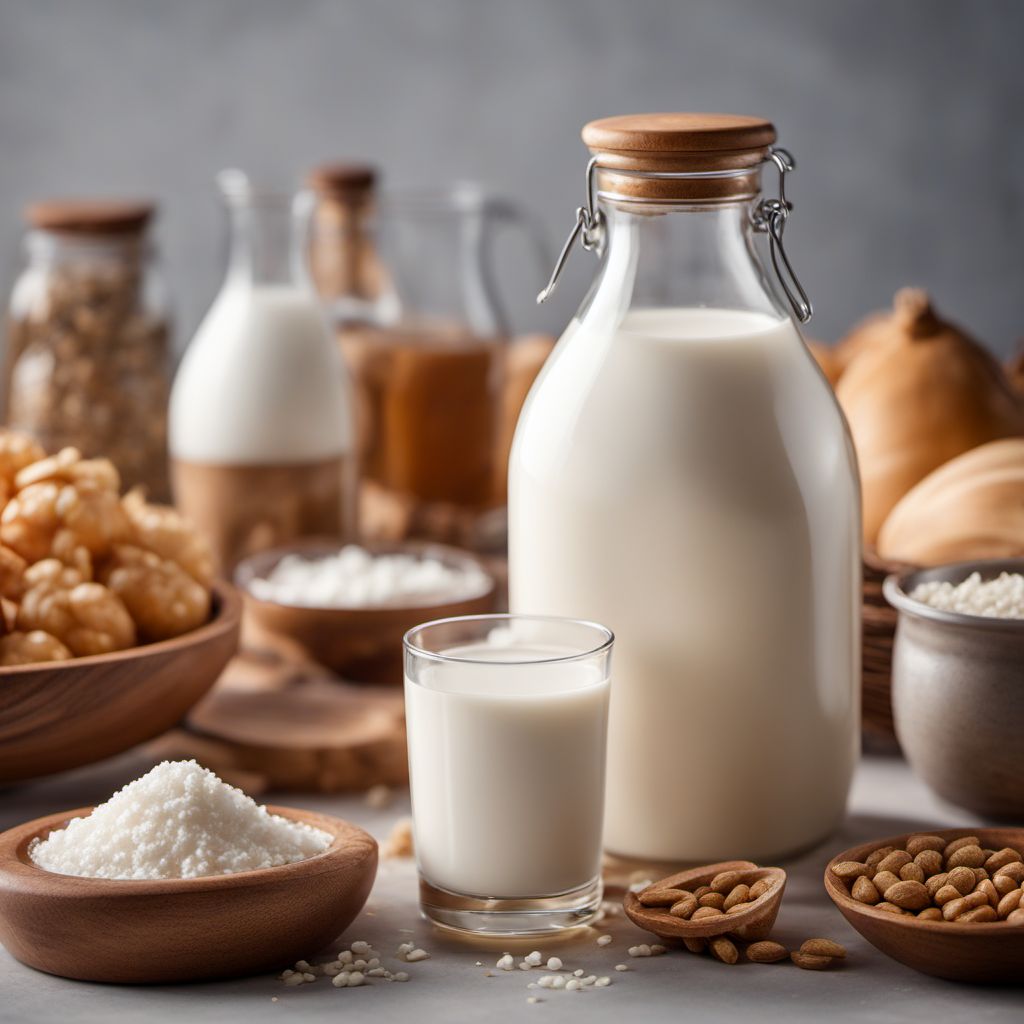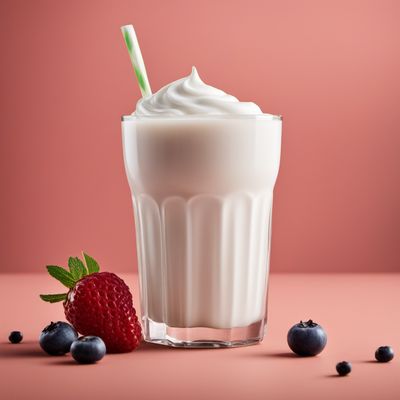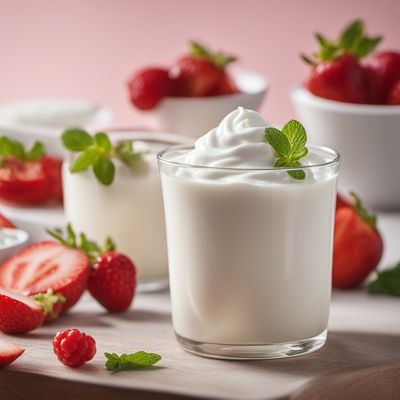
Ingredient
Fermented milk products
The Tangy Transformation: Unveiling the World of Fermented Milk Delights
Fermented milk products are dairy products that have been cultured with beneficial bacteria, such as Lactobacillus or Bifidobacterium strains. This fermentation process converts lactose, the natural sugar in milk, into lactic acid, giving these products their characteristic tangy flavor. The texture of fermented milk products can vary from creamy and smooth to thick and spoonable, depending on the specific product. They often have a slightly acidic taste, which adds depth and complexity to both sweet and savory dishes. Visually, these products range from pure white to off-white, with a smooth and uniform appearance.
Origins and history
The origins of fermented milk products can be traced back thousands of years to various cultures around the world. The process of fermenting milk was likely discovered by accident, as milk left at room temperature would naturally sour and thicken due to the presence of bacteria. This discovery led to the intentional cultivation of beneficial bacteria to create a wide array of fermented milk products. Different cultures have their own traditional fermented milk products, such as yogurt in the Middle East and Eastern Europe, kefir in the Caucasus region, and sour cream in Eastern Europe and North America. These products have played a significant role in the culinary traditions of these regions and continue to be enjoyed worldwide.
Nutritional information
Fermented milk products are a rich source of essential nutrients, including calcium, protein, and probiotics. They provide a good amount of vitamins, such as vitamin B12 and riboflavin, and are generally lower in lactose compared to regular milk. The nutritional content may vary depending on the specific product, but they are generally considered a healthy addition to a balanced diet.
Allergens
Fermented milk products may contain lactose and milk proteins, making them unsuitable for individuals with lactose intolerance or milk allergies.
How to select
When selecting fermented milk products, look for those that are made from high-quality milk and contain live and active cultures. Check the label for the presence of beneficial bacteria strains, such as Lactobacillus acidophilus or Bifidobacterium lactis. Opt for products that are free from artificial additives or excessive sweeteners, as these can affect the overall quality and health benefits.
Storage recommendations
Fermented milk products should be stored in the refrigerator at temperatures below 40°F (4°C) to maintain their freshness and quality. It is important to keep them tightly sealed to prevent contamination from other odors in the refrigerator.
How to produce
Amateur enthusiasts can produce their own fermented milk products by using a starter culture or by adding a small amount of a commercially available fermented milk product to fresh milk. The mixture is then left at a controlled temperature for a specific duration to allow the bacteria to ferment the milk. Detailed instructions and recipes are widely available for different types of fermented milk products.
Preparation tips
Fermented milk products can be enjoyed on their own as a healthy snack or incorporated into a variety of dishes. They can be used as a base for smoothies, dressings, and dips, or added to baked goods for a moist and tangy twist. When using in cooking, it is best to add fermented milk products towards the end of the cooking process to preserve their probiotic content and prevent curdling.
Culinary uses
Fermented milk products are widely used in both sweet and savory dishes. They can be enjoyed as a standalone snack, used as a topping for desserts or breakfast bowls, or incorporated into marinades, sauces, and soups to add creaminess and tanginess. They are also commonly used in baking to enhance the texture and flavor of cakes, muffins, and bread.
Availability
Fermented milk products are commonly available in grocery stores and supermarkets worldwide. They are also produced locally in many regions, particularly in areas with a strong dairy tradition.
More ingredients from this category

Probiotic milk-like drinks
Gut-Boosting Elixirs: Unleashing the Power of Probiotic Milk-Like Drinks

Yoghurt drinks, including sweetened and/or flavoured variants
Sip on the Creamy Goodness: Exploring the World of Yoghurt Drinks

Traditional sour milk products
Cultured Delights

Yoghurt
The Creamy Delight: Unveiling the Secrets of Yoghurt